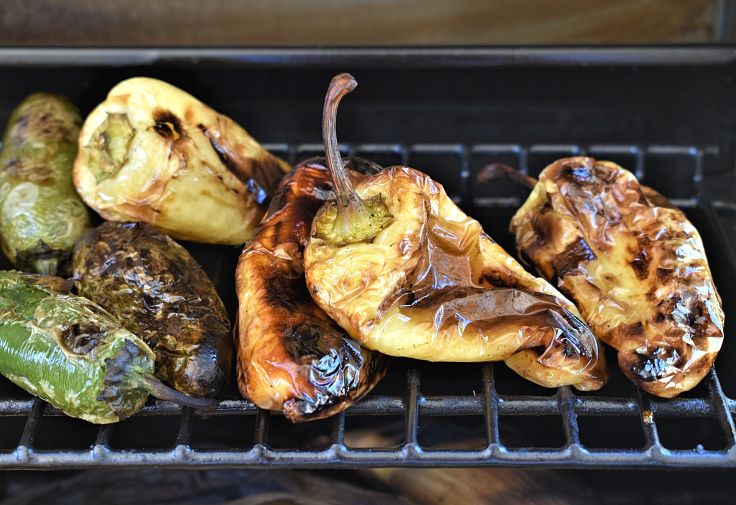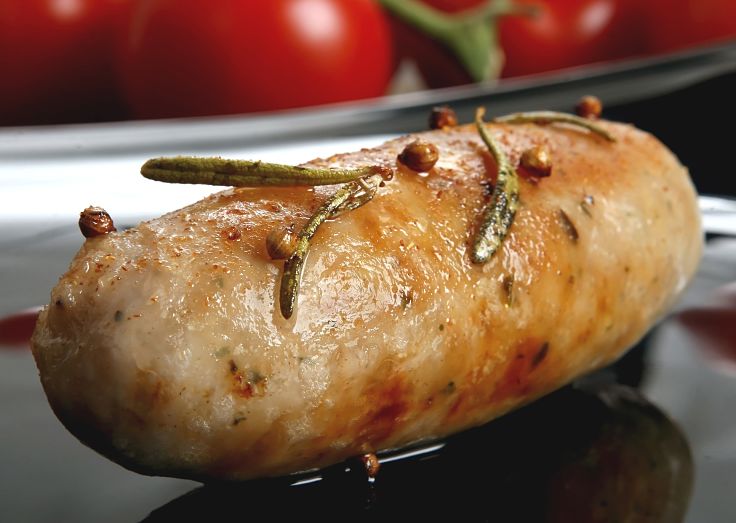Grill, Barbecue Vegetables Like a Pro with Search Tools, Tips
Most vegetables taste better when grilled and barbecued. The high temperature, dry heat, flames or hot coals caramelizes a sugars in the vegetables, intensifying its sweetness and complexity. This produces the slight charring that adds to the flavor. Vegetables also benefit from the smoky and slightly charred aroma, imparted by grilling.
While virtually every vegetable can be grilled, not all can be cooked successfully in the same way.
There are three basic things to consider:
- How to Set Up Your Griller, Barbecue or Broiler for Vegetables
- How to Prepare Each Vegetables for Successful Grilling
- How to Support Vegetables When Grilling
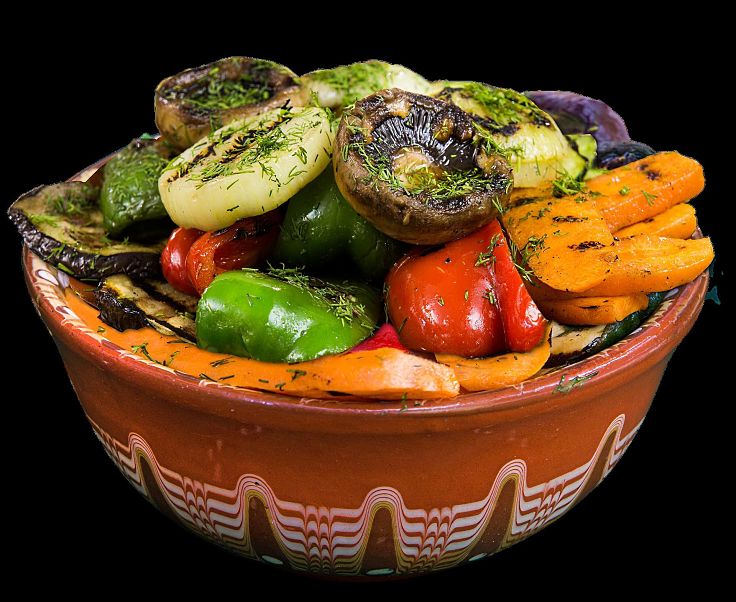
Six Ways to Set Up for Grilling and Barbecuing Vegetables
1. Direct Grilling
This method involves cooking your vegetables directly over a fire, flames or hot gas burner. You set up a direct grilling fire or barbecue, by mound the glowing coals under part of the grill or plate and cooking the vegetables directly over this area. On a gas barbecue only light one of the burners or half of the set of burners. You can direct grill over the hot burner, and move the vegetables away from the flames to finish the cooking. Keep the fire hot with temperatures about 450-600 degrees F (220-260 degrees C). Keep the grilling time brief, only 2-6 minutes per side. Bell peppers can be char-grilled directly over the flames from a stove top burner unit. They can also be held in the flames using a pair of metal tongs.
Vegetables Suitable for Direct Grilling include:
- Sliced vegetables, from onions to eggplants.
- Leafy vegetables, like bok choy, spinach and kale;
- Vegetables with slender stalks, such as asparagus and broccolini
- Soft, moist vegetables, like tomatoes, zucchini, mushrooms, onions cut in half
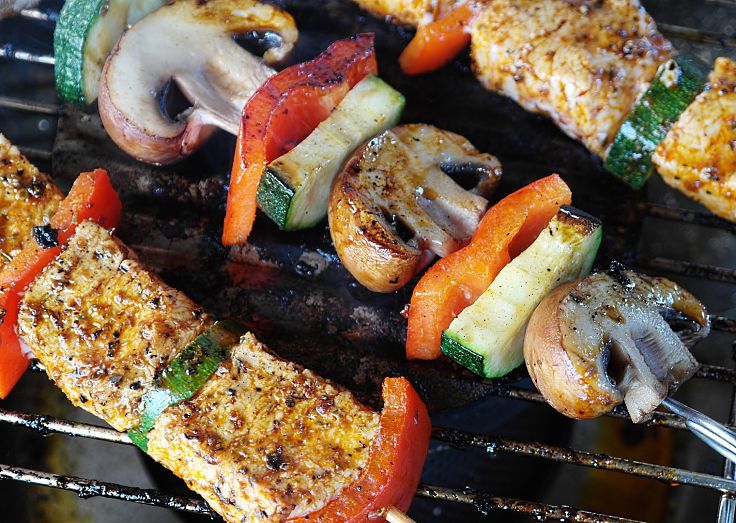
2. Indirect Grilling
With indirect grilling, the vegetables are cooked away from the hottest flames, not directly over the fire, but next to it. Often the grill cover is closed to capture and retain the heat. Indirect grilling is generally done with moderate heat (350-400 degrees F; 175-200 degrees C). The cooking times are longer than for direct heating. Vegetables generally takes 40-60 minutes to cook using this method. Large, dense, dry or firm vegetables, that take more time to cook the inner parts of the pieces, are better grilled using this method. Examples of vegetables suitable for this method are carrots, potatoes, sweet potatoes, whole onions, squash and pumpkin.
3. Wrapping Vegetables in Foil or in Foil Packages
You can grill vegetables by cooking en papillote (“in parchment”). Wrapping vegetables in foil helps them retain moisture when cooking and prevents the outside charring before the inside is cooked. Vegetables may also be grilled together in thick foil BBQ packages and containers. Choose groups of vegetables that take the same time to cook. Wrapping vegetables in a double layer of aluminum foil creates a steam chamber for food. Add a tablespoon of water, and a tablespoon of butter with your vegetables. Fold over and crimp up the edges to seal the foil packet. Cook steamer packets off to the side, away from the flames, using indirect grill heat.
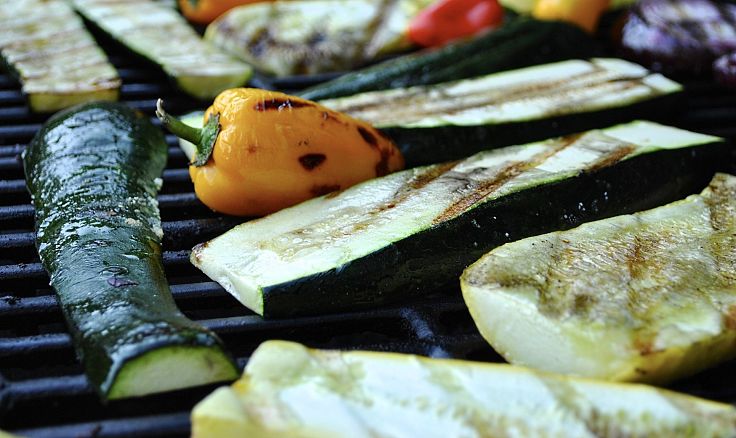
4. Grilling Vegetables in Wire Baskets
Wire baskets make it easier to keep the vegetables from falling through the barbecue gate or surface. It also makes it easier to turn a group of vegetables at the same time. Metals baskets designed for sausages can be used for vegetables. Baskets are helpful for very small vegetables such as chopped squash, pearl onions, snap peas, cherry and grape tomatoes, zucchini, carrots, that may fall through the grates. You can also cook slices of vegetables in baskets which makes them easier to flip over.
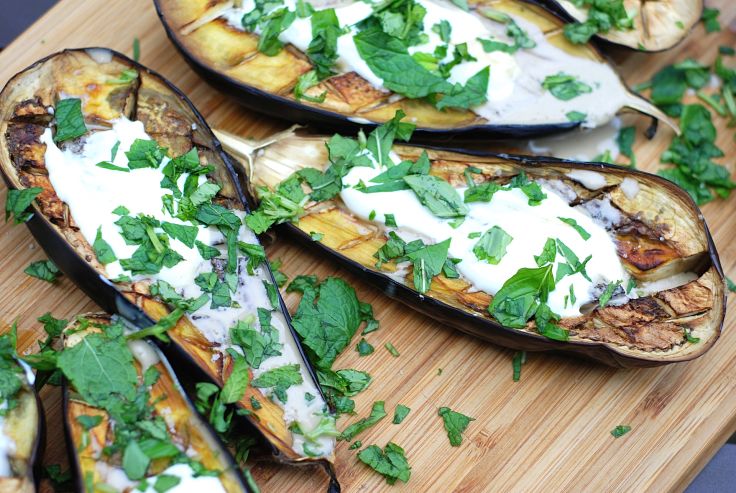
5. Vegetables can be Pre-boiled or Par-boiled, or even Fried before being Finished on the Grill or barbecue
This method overcome the problem of getting the timing right to cook the inside of the vegetable without burning the exterior to charcoal. Boil whole beets, potatoes, carrots, parsnips until tender enough to pierce with skewers (15-30 minutes). For artichokes, cut the spines off the end of the leaves and slice in half lengthwise, then boil until almost tender (5-10 minutes). Then grill on skewers or in baskets. Par-boiled potatoes take only a few minutes to finish cooking on the grill. The outside will be gold brown and crispy while the centers will be moist and fluffy.
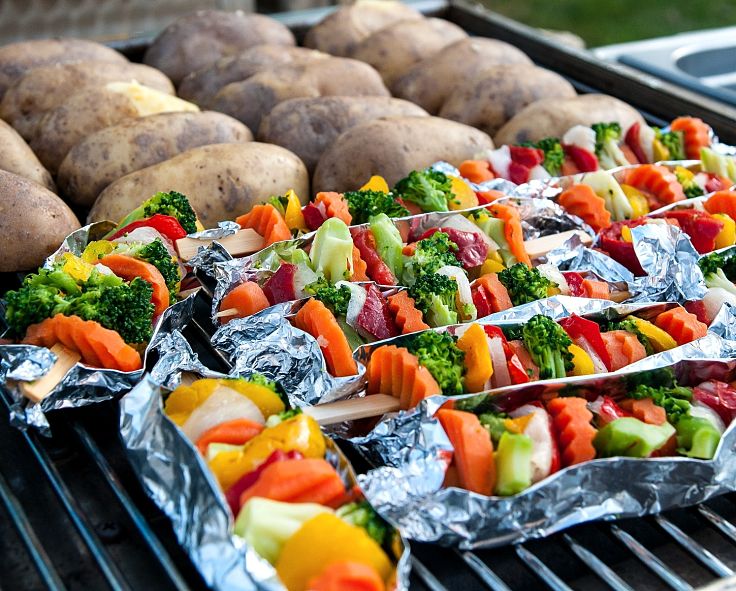
How to Support Vegetables When Grilling
Skewers - help when grilling small vegetables or chopped vegetables to get the charred and smoky tastes on the grill without risking them falling through the grates. You can use stainless steel, wooden or bamboo skewers and the oblong profile ones are best. Lightly brush the vegetables with olive oil after threading them. Pre-soak wooden and bamboo skewers in water for 20-30 minutes prior to use to stop them burning.
Rafts - so-called 'vegetable rafts' can me made using 3-5 skewers passed through long slender vegetables such as asparagus and beans. Stainless steel wire versions are also available. This ensures the items will not fall through the grates and makes them easy to flip over. Brush with garlic, sesame or coconut oil, and likely season with salt and pepper. Grill directly on the grate until brown and tender.
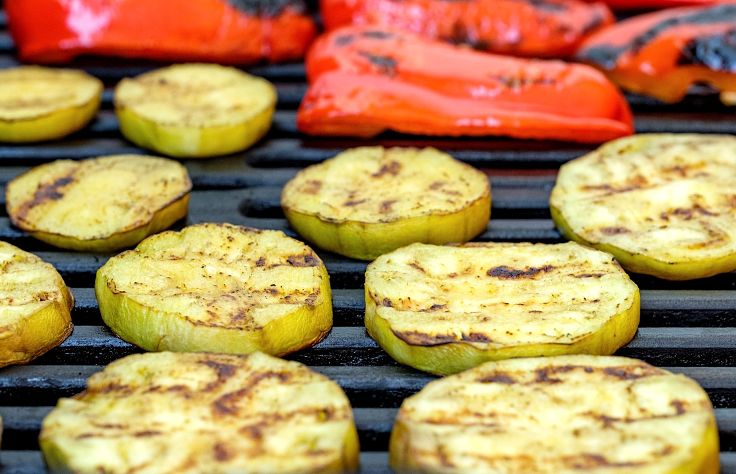
Baskets and Foil Packets - see the above description.
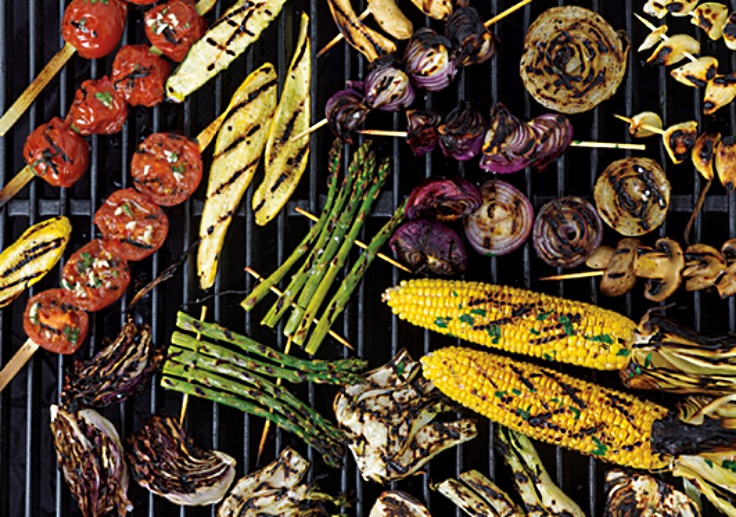
Top Tips for Grilling Vegetables
Cut vegetables into grill-friendly sizes - Flat slabs are best because they are thin and give you a wide surface area. Slice long vegetables, like zucchini, in half crosswise to make them easier to turn.
Dress, season and coat your vegetables - Toss or brush vegetables to give them a thin glaze of oil. Sprinkle with salt, but avoid using pepper and spices at the start as they will burn.
Consider a marinade - Like meat, marinading vegetables to give them even more flavor. You can also brush partly cooked vegetables with vignettes and marinade solutions. However, marinades can burn. Start with a base of equal parts oil and an acid such as lime juice or balsamic vinegar. Spiced up with some aromatics.
Temperature is critical - Most vegetables grill best over moderate to high heat. Firm vegetables, like fennel, potatoes, pumpkin, cauliflower and winter squash are best grilled indirectly. Move them to a cooler part of the grill to finish cooking them after an initial browning of the exterior. Leafy vegetables can take only -1-2 minutes, or even seconds and so they need to be watched carefully. Learn to identify the hot and cooler parts of your grill.
Grill marks - Creating nice grill marks does boost the taste, but it adds a look that many people love.
Pick a colorful variety of vegetables - This makes a beautiful platter. Remember most people eat with their eyes.
Simple ways to add protein and flavor - Pair your grilled vegetables on skewers with tofu, halloumi, fruit and cheese blocks.
Double-grate your grill - Place two grates on your grill so that they criss-cross. Vegetables are then less likely to fall through the cracks.
Don't forget about your salad - Leafy greens: can be a tasty treat when lightly grilled for 10-45 seconds. Spinach, Chinese cabbage, kale, arugula, even herbs can be grilled. Toss them in oil, grill them fast over high heat. No need to flip them over. Timing is critical. Romaine lettuce, cabbage Brussels sprouts and similar 'head' vegetables can be cut in half and grilled cut-side down.
Don't overcooking your hard vegetables - Squash, pumpkin and other hard vegetables can get too dry. To get moist interiors as well as charred and brown exteriors, use big thick chunks and remove them off as soon as they start to 'leak' moisture (water droplets on the uncooked face).
Consider varieties more suited for grilling - Japanese eggplants are smaller and thinner and are easier to grill. Butternut pumpkins and smaller varieties are easier to grill by simply cutting in half, leaving the skin on.
Flame-Char bell peppers and eggplants and then peel - These vegetables and many others can be charred over flames, even on your stove-top burners until they are black. Allow to cook and then peel off the charred bits. The remnant burnt bits add a smokey taste and aroma. After peeling the rest of the vegetable is tender and nice.
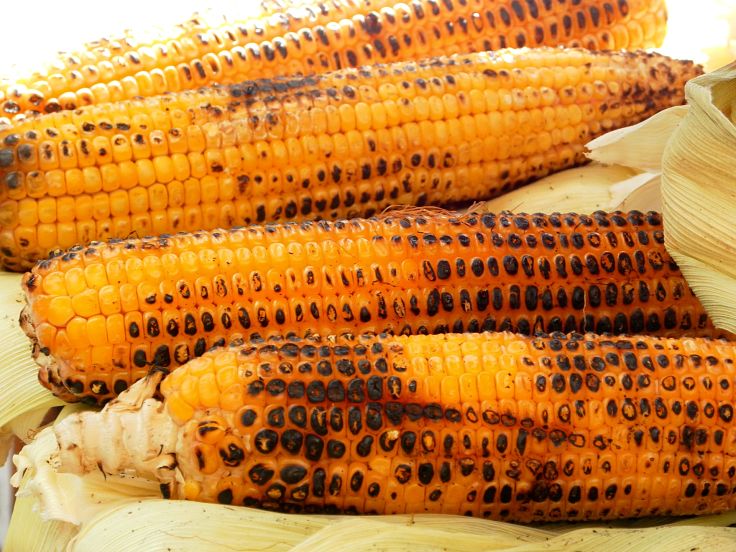
Search Tool - Enter a Vegetable Name to Discover How to Grill or Barbecue it
- Artichokes - Slice off the top and boil or steam until just starting to soften. Slice it in half, vertically from top to bottom. Place it over the coals or flames with the cut-side down, and grill or barbecue until the inner side of the leaves soften and the outer part is lightly charred.
- Asparagus - Firstly, trim the woody bottoms from the stalks. Place the stalks directly on the BBQ (perpendicular to the grate) and cook until just tender but not mushy. Or use the raft technique with a group of skewers. Asparagus cooks quicker than most other barbecued vegetables, so be sure not to overcook them.
- Beets - Slice into halves or quarters. Cook directly on the grill with cut-face down, or on skewers or in baskets.
- Bell peppers - Leave whole or cut in half and remove seeds and membranes. Heat the grill to high ad cook directly over the flames or hot coals until the skins are blackened all over. Turn the peppers with tongs several times. Cooking for about 10-15 minutes until the internal flesh is tender. Cool and then peel off the blackened skins, and remove the stems and seeds.
- Broccoli - Trim off the hard lower section of the broccoli stem, then slice broccoli heads in half and grill directly on the grate or in rafts and baskets.
- Brussels sprouts - Slice in half and grill cut-face down, or on skewers or in baskets.
- Cabbage - Despite what you might think, grilled cabbage is a delight. It develops crispy blackened edges when cooked, and becomes quite sweet, with leaves slightly tender, but retaining some crunch. Simply cut each head into wedges, or halves for small heads. Secure the outer leaves with one or two skewers. Grill or barbecue directly over high heat for about 9-16 minutes.
- Carrots - peel and lay them right across the grill, or use rafts or baskets. Pre-cook for quicker results with no loss of flavor.
- Corn on the Cob - Fresh sweet corn grilled in its husks gets a smoky scent when cooked. Soak unpeeled ears of corn in water for about 10-12 minutes and grill whole. The other way is to fully shuck the corn, and brush the corn cobs with melted butter. Grill until tender and some of the kernels have started to brown (5-12 minutes). You can also pull back half of the leaves, to get a combo cooking effect with some kernels steamed and others roasted. Corn can also be cooked wrapped in foil. Add some butter and herbs and season the corn before wrapping. Can be unwrapped and finished on the grill gate to impart the brown color, drier texture and smoky flavor.
- Cauliflower - Slice vertically into flat "steaks". Or cut into florets and grill in baskets or on skewers.
- Eggplant (Aubergine) - Eggplant can be great when cooked on the grill or barbecue, but it can become soggy and 'lifeless' when overcooked. Try soaking the thick slices in saltwater before grilling. This ensures the slices are crispy brown on the outside, while being creamy and sweet on the inside. This also works when frying eggplant as soaking in water stops the slices soaking up too much oil.
- Fennel - Slice vertically and grill on cut face, or slice again to get thick flat segments to grill.
- Green beans - It's tricky to cook them directly on the grate as they fall through easily. Use rafts or baskets.
- Lettuce (especially Romaine) - Slice the head in half vertically. Sprinkle the cut-side with olive oil, season with salt and pepper and grill cut side-down like cabbage.
- Mushrooms - Grill or barbecue small mushrooms using skewers or in baskets. Slice medium-size ones first. Large mushrooms such as Portobello mushrooms can be barbecued directly on the grate, either whole or sliced in half. Do not overcook.
- Onions – Small and medium onions can be grilled whole without peeling them. Half onions of thick slices can be cooked directly on the grate or on skewers or in baskets. Onions can also be grilled wrapped in foil.
- Parsnips - Peel and lay them right across the grill. Large ones can be cut in half, or cut into sections. Can also be grilled on skewers, rafts and in baskets
- Plum tomatoes - Can be grilled whole on skewers, or after cutting in half. Very large tomato halves can be grilled directly on the grate (no need to flip over).
- Potatoes, Summer Squash, Sweet Potatoes, Yams and Other Hard Vegetables - There are many ways to cook potatoes and other hard vegetables on the grill. You can cook them whole over indirect heat. You can wrap them in foil. You can cut them into thick slices and wedges and thread them onto skewers, or place then directly onto the grill grate. You can also cook them in the coals. Squash, hams, sweet potatoes and other hard vegetates can all be cooked in a similar way.
- Radicchio and Treviso - Cut large heads into quarters, medium-size ones in half. Leaving the core intact and in place to hold the leaves together. Brush the cut surfaces with oil and grill with this face down directly on the grill grate. Quarters and very thick slices can be cooked in baskets or on skewers.
- Spring Onions and Leeks - Green or spring onions are delicious when cooked on the grill or barbecue. They taste sweet and smoky, even a bit creamy. They are adding soft and juicy. Lay straight across the grill and brush with oil or melted butter. You can also raft them and cook in baskets. Leeks can be grilled in the same way. Simply slice larger leeks in half length-ways. Grill them cut side-down. Short sections can also be threaded onto skewers,
- Tomatoes - Small-size tomatoes, such as cherry or small roma tomatoes are best grilled and barbecued on 'oblong' profile skewers. Medium size tomatoes can be grilled while on the gate or on skewers. All tomatoes can be grilled in baskets. Do not overcook them, nor cook them too quickly as it takes time for the inside to cook. Remove the tomatoes when they start to blister on the outside. A little charring add extra flavor.
- Zucchini, Marrow and Softer Squash - Trim off both ends. For thicker vegetables slice in half lengthwise and cut into short sections. Or cut into thick slices. These can be grilled directly on the grill grate surface, in skewers, and in baskets. They can also be cooked using rafts. These vegetables take far less time than potatoes and pumpkins.
- Vegetable Slices - Eggplant, Squash, Bell Peppers, Onions, Avocado, Swedes, Turnips and Zucchini - The easiest way to grill and barbecue round vegetables such as eggplants and onions and eggplants to cut them in half or into thick slabs. They can be grilled directly on the grate, on skewers in baskets and in rafts.
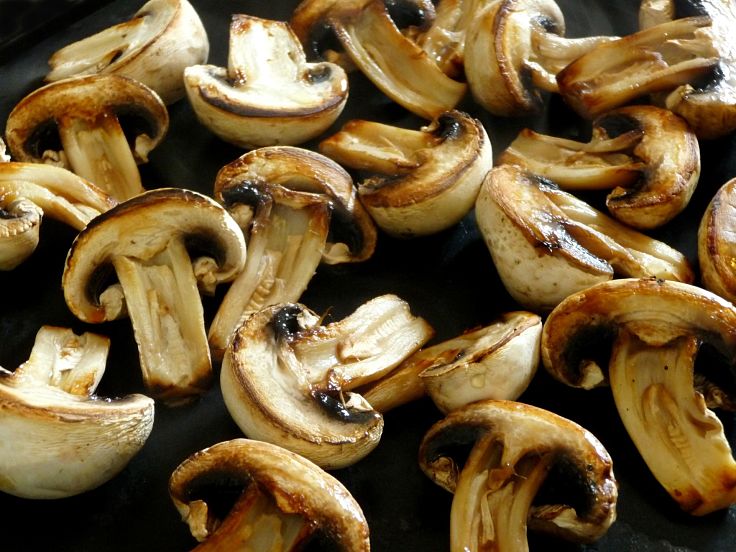
Related Articles
Best Grilled and Barbecued Vegetable Recipes
Grilled and Barbecued Fruit Recipes | Best Fruit for Grilling
Grilled Smoky Eggplant Yogurt Dip Recipe
Best Beetroot Recipe Collection Using Grilled, Roasted, Boiled, Fresh Beets
How to Pre-Cook Vegetables for Perfect Grilled and Barbecued Meals
Best Healthy Cauliflower Recipes - Roasted, Grilled and Barbecued
